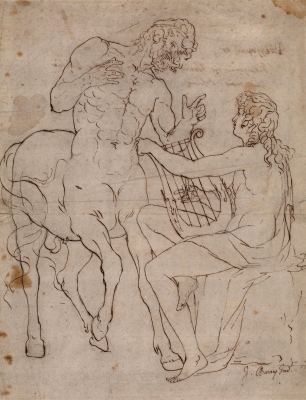Private collection, USA
A bandit taking up his post
- Oil on canvas
- 16 ¼ × 12 inches · 412 × 304 mm
Collections
- Pulteney Hotel, Bath;
- Private collection, Denmark;
- Christian B Peper, acquired in 1985, to 2012.
Literature
- G. Benthall, John Hamilton Mortimer ARA: Drawing and Engraved Works, with a Revised Account of his Life, MS. completed 1950s (deposited Victoria and Albert Museum Library), p. 129;
- Benedict Nicolson, John Hamilton Mortimer ARA 1740-1779: Paintings, Drawings and Prints, exhibition catalogue, 1968, p.36.



